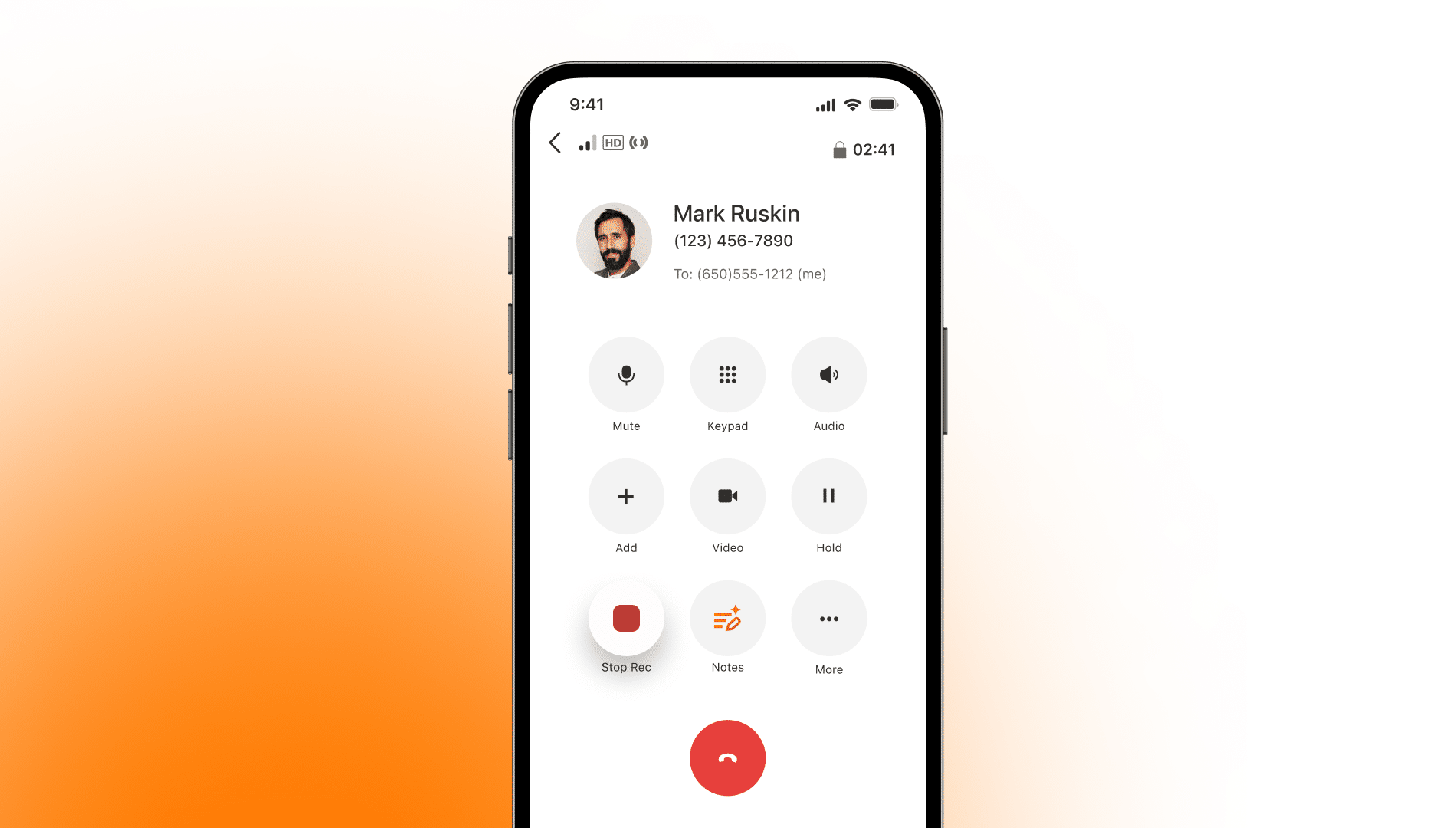If you’re a small business owner, you’ll already know how important it is to keep in regular contact with your prospects and customers. There’s no better way to build relationships and develop rapport. Perhaps that’s the reason you resort to those “touching base” emails.
But are they the best way to keep in touch in today’s busy workplace? Inboxes are crowded and schedules have no space. It’s hard to reach even your most engaged customers.
Your messages have to resonate from the get-go. You just can’t afford to bore your contacts with bland subject lines, irrelevant information, or vague requests. So how can you stay in touch without annoying them?
In this post, we’ll explore different alternative ways for you to successfully reach out to your prospects and customers—without resorting to unimaginative “touching base” messages.
What we’ll cover:
- What is a “touch base” email?
- 10 Alternative “touch base” email examples
- 3 Non-email alternatives to “touch base” emails (that just might be more effective)
📥 Are you over email? If you hit at least one of the points on our free checklist, it’s time to consider an email alternative.
What exactly is a “touch base” email?
The phrase “touching base” is often used in business contexts when reconnecting with someone (e.g., “just touching base with you”) or proposing an appointment with them (e.g., “let’s touch base”).
“Touch base” emails, then, are the messages you send to your contacts’ inboxes for those purposes.
The trouble is that “touching base” is an overly-used piece of business jargon. The expression doesn’t stand out or convey anything particularly meaningful to those who read it—making it far from ideal if you want your emails to be opened, read, and replied to.
You’ll need to find another way to say touching base if you’re going to get through to your contacts. You can do this either by being more thoughtful about your emails or by opting for non-email alternatives that help get your message across.
Let’s look at the email route first.
10 alternative “touch base” email examples
Whenever you’re making contact with a prospect or customer via email, you should make sure your message is clear, to-the-point, and contains some personal relevance for the recipient.
Emails of this kind are far more likely to make an impact and elicit a favorable response compared to messages that are vague, rambling, or insufficiently personalized.
Here are 10 alternatives to the cookie-cutter “touch base” email:
1. Propose a specific topic, date, and time
If you’re proposing a call or meeting with your contact, be specific—don’t leave them guessing with something vague like “let’s touch base in the next few weeks.”
A simple, clear-cut recommendation about what you’d like to talk about and when you’d like to talk about it makes it easier for your contact to say yes or no. You can then follow up with a calendar invite.
Example: “Hello [contact name]. Let’s book some time to talk about [topic]. How does [date and time] work for you?
2. Share a relevant resource
One of the best ways to stay top of mind with your prospects—without coming across as intrusive or pushy—is to send them a resource you think they’ll find valuable.
Sharing a useful article, podcast, eBook, or industry report will help you build trust and show that you care about their industry and their success.
Example: “Hey [prospect]. As someone who works in healthcare [or any other industry], I thought you might find this guide on how to run a remote-friendly healthcare practice illuminating. It points out some interesting tips about hiring and marketing.”
3. Reference a piece of their content
One way to grab the attention of your recipient is to mention a recent piece of content they’ve published. This could be an article, a LinkedIn post, or even a Quora answer they recently wrote.
Make sure that any commentary you offer is thoughtful. You don’t want to sound too general, but you don’t want to come across as a stalker either.
Example: “Hey [client]. I just read your latest blog post about [topic]. Really interesting! I hadn’t thought about [relevant point] in quite that way before.”
4. Congratulate them after a trigger event
Events like promotions, product launches, and new rounds of investment present a great opportunity to reach out to your prospects and customers in a way that comes off as natural.
You can use your congratulations just as a way of keeping up appearances or as a way to bring up a product or service that your contact might find useful in light of the trigger event.
Example: “Hello [contact name]. Congratulations on the new role—can’t say I’m surprised! Let me know if you’d like to talk about [relevant product or service]. Many of our other clients in a similar role to yours swear by it.”
5. Bring up common challenges
One way to show that you genuinely understand the pain points and needs of your prospects is to reach out to them about emerging challenges in their industry.
This proactive measure lets them know that your company has their best interests at heart, and gives you a better insight into the specific issues facing the players in their market.
Example: “Hello [prospect]. A lot of our clients have recently been experiencing [emerging challenges]. Have you been seeing the same issues? We’ve found that [tip] tends to help. If you’d like to hear more, how about a call next Friday?”
6. Offer some actionable advice
What better way to demonstrate the value you can bring to prospects than to offer them personalized, actionable advice about how to achieve a goal or fix some problem in their business?
The trick is to be respectful and gentle in your approach. You don’t want to put them off by insulting their efforts.
Example: “Hello [prospect], I’ve just seen some excellent reviews of [their product or service] on [review website]. Your clients seem particularly happy with [relevant features]. Have you ever considered doing [actionable tip]? I think it could help take [their company] to another level. Let me know if you’d like to discuss this further on a call.”
7. Reiterate your value
Sometimes your prospects and existing customers just need a reminder of what you can actually do for them.
A simple message that reiterates the various ways you can deliver value to their particular business may well convince them to move the conversation forward.
Example: “Hello [customer]. I hope you’ve been getting the most out of [your product or service]. Don’t forget we can also help you achieve [relevant goals] with our [relevant products or services]. If that’s something you’d like to discuss, let me know and I can arrange a brief call.”
8. Ask for information
When working on large-scale projects involving multiple stakeholders, you’ll often have to request information from your colleagues or partners.
Instead of saying “touch base,” why not get straight to the point?
Example: “Hey [stakeholder name]. Have you had a chance to look at the report I sent last week? Would be good to get your team’s feedback before Friday’s meeting. Are you free for a call at 3:00 P.M. tomorrow?”
9. Invite your contact to an event
A great way to add value to your customers’ or prospects’ lives is to invite them to a local event or webinar where they can network with other players in their industry.
This creates the opportunity for you to meet them in person without forcing the matter.
Example: “Hey [recipient]. [Your company name] is hosting an educational event about [industry topic] at [location and date]. We’d really love to see you there.”
10. Reach out to ex-clients
Sometimes it makes sense to “touch base” with your previous clients to see how they’re getting on with their new supplier. They may be underwhelmed with the service they’re getting and would welcome a fresh conversation with you.
Example: “Hello [ex-client]. Last time we spoke, your contract with [your competitor] was due to end in three months. How have things gone since then? Look forward to hearing from you.”
3 Non-email alternatives to “touch base” emails
Instead of playing email tag all day, you can also stay connected with your prospects, customers, and clients by using other (often more effective) communication channels:
1. Good old-fashioned phone calls
Touch base calls are the voice-based equivalents to touch base emails.
RingCentral’s cloud-based business phone system lets you make and receive secure calls from your business number, wherever you are. As part of a unified communications platform, the system also comes with conference calling, business SMS, and online fax functionality:

2. Video meetings
When meeting in person just isn’t practical, RingCentral Video lets you speak face-to-face with clients and colleagues from anywhere, on any device.
You can also share your screen and record your online meetings (and use RingSense AI to take real time call notes, provide personalized insights, and automatically summarize the meeting for you.).
3. Instant messaging
Instant messaging is great for in-company communication. Team chats let you touch base and collaborate with other people in your company wherever you are.
You don’t have to limit this communication channel only to your own teams, though. You can also add guests from outside your company for easier cross-functional collaboration on more complicated projects.
Oh, and the bonus of using RingCentral is that you can have all three of these communication channels (and more )in one convenient app.
No more “just touching base” emails…
When reaching out to a prospect, customer, or project partner, it’s essential to compose messages that draw the reader’s attention and compel them to respond.
This means doing away with yawn-inducing office jargon.
Use the tips and examples covered in this post as inspiration to improve your business communication.
Get in touch today to learn more about how RingCentral can boost your customer communications.
FAQs
What’s wrong with sending a touching base email?
There’s nothing wrong with it per se, but unless the email has a specific focus, it’s likely to get lost among the crowd of messages your contact receives every day. To foster genuine engagement, you need to get a little more strategic. Crafting a message around a specific topic such as congratulating the recipient on their latest product launch or sharing a useful resource is much more likely to get a positive response.
What’s the most effective alternative to touching base emails?
This depends on a number of factors including how engaged the client already is with your business and what you’re aiming to achieve by contacting them. For instance, if your goal is to cross-sell a new product to an existing client, then simply sending an email to alert them to the product and explain its value to them may be effective. Whereas if you’re hoping to re-engage a former client, asking them for specific information would be a better tactic, since that approach actively invites a response.
1 thehrdirector.com/business-news/workplace/touch-base-hated-phrases
Originally published Jun 10, 2024, updated Sep 26, 2024






